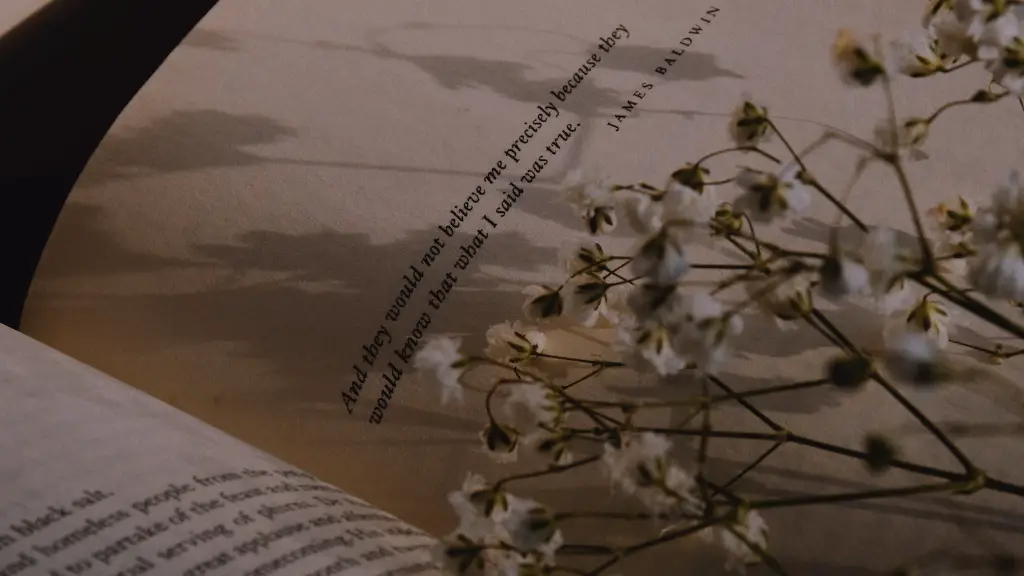Overview of Attitude in Poetry
Attitude in poetry is the writer’s response to a situation, person, idea or emotion. It is a unique way a poet expresses themselves and their feelings through the written word. Attitude in a poem can range from being sarcastic, humorous, angry, sad, questioning, defiant or accepting. A poet’s attitude toward their subject is an important factor in determining the tone of the entire poem. Attitude can also be seen as the poet’s interpretation of a given context, conveyed through the language and structure of their words.
History of Attitude in Poetry
The concept of attitude in poetry has a long and varied history. It stretches all the way back to the Ancient Greeks, with the poets Homer and Sappho both incorporating attitude in their works. Throughout the Middle Ages, poets such as Geoffrey Chaucer and Edmund Spenser sought to express their attitudes towards the world around them through their works as well. In the Romantic period, poets sought to captures their feelings about nature and love through attitude in their works. In more modern times, William Wordsworth, Emily Dickinson and Walt Whitman are a few of the names that come to mind when discussing poets who effectively used attitude in their work.
Types of Attitudes in Poetry
There are many different types of attitudes a poet can take when crafting a poem. Some of the most popular are humorous, sarcastic, questioning, angry, accepting and defiant. Humorous pieces often make use of irony, understatement and humor to express a certain attitude. Sarcasm is the use of ironic and biting language to put others or specific situations into perspective. Questioning attitudes are those in which the writer examines and queries the world around them, while accepting and defiant attitudes express either acceptance or defiance of circumstances.
Influence of Attitude in Poetry
Attitude in poetry can be seen as an influential and powerful tool in conveying one’s thoughts, feelings and points of view in a creative and artistic way. Poetry is often used to express emotions or ideas in a deeper, more meaningful way than mere words can express. By utilizing different types of attitude, poets are able to give unique importance to the words, feelings and ideas they are writing about.
Methodology for Incorporating Attitude in Poetry
Incorporating attitude in poetry is an art form. The poet needs to be aware of the meaning behind the words they are using, as well as the tone and cadence of the poem. In order to successfully convey a specific attitude in poetry, the poet needs to understand the difference between literal and figurative language, as well as the various rhetorical devices such as metaphor and metonymy. Additionally, the poet should select words and phrases that accurately depict the emotion they are attempting to convey, while using language that is accurate, precise and meaningful.
Analysis and Exegesis of Attitude in Poetry
Autobiographical, political and religious poetry often relies heavily on attitude in order to convey the poet’s perspectives, ideas or emotions. Attitude in these poems serves as a vehicle for connecting the reader of the poem with the writer, creating a shared emotional experience between both parties. In order for a poem to successfully create this connection, the writer needs to apply varying degrees of attitude in order to ensure their message is communicated clearly and accurately.
Examples of Attitude in Poetry
Attitude in poetry can be found in many different works, from classic to contemporary. An example of attitude in poetry can be found in William Wordsworth’s poem “I Wandered Lonely as a Cloud”. In the poem, Wordsworth conveys his feelings of awe and amazement at the sight of a field of daffodils. This attitude of admiration and appreciation is echoed throughout the poem; it’s one of the primary ways the poem conveys its message.
Stylistic Choice and Attitude in Poetry
In addition to the poem’s attitude or message, the poet’s stylistic choices can also influence readers’ interpretation of a poem. Various elements, such as word choice, rhythm and rhyme scheme can all be used to convey a particular attitude or emotion. For example, a poem written in iambic pentameter may suggest a certain formality or gravitas in the poem’s message. Similarly, the choice of a particular imagery or setting can also affect the readers’ interpretation of the poem’s message and the emotion conveyed by the poem.
Critical Reception and Attitude in Poetry
The critical reception of a poem can often be directly linked to its attitude. For instance, a poem that carries a particularly negative attitude can often provoke strong reactions from readers, while a poem with a more hopeful outlook can elicit a more positive response. Poets who write works with a strong attitude often receive strong critical reception and appreciation for their works. For this reason, it is important for poets to consider the attitude of their poem when deciding how to approach their writing.
Reflection of Attitude in Poetry
The reflection of a poet’s attitude in poetry can be a telling example of their worldview and the things they stand for. Through the use of attitude in their works, poets can express their opinions about the world in a more creative, artistic way than traditional methods of communication. A poet’s attitude can also be seen as an extension of their personality, allowing readers to get to know the writer on a deeper, more personal level.


